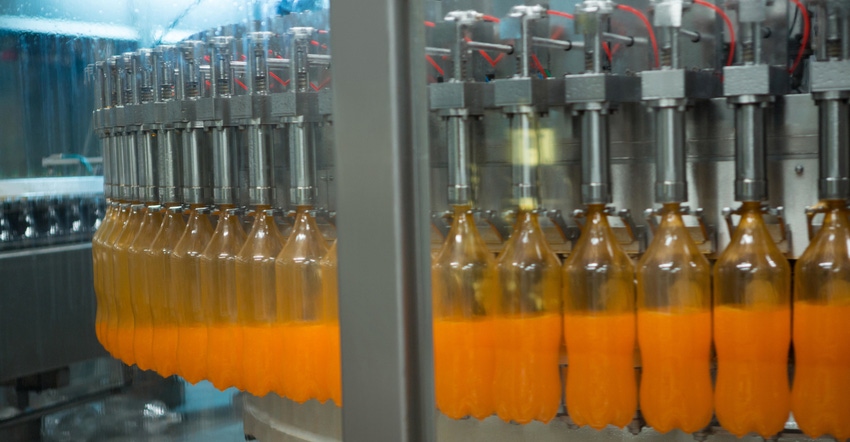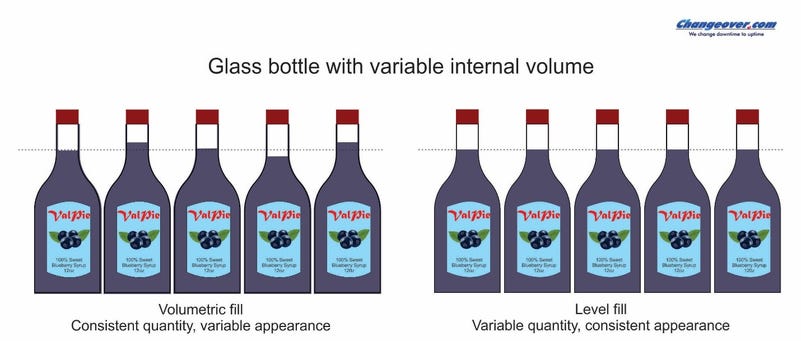Should You Fill Packages by Level or Volume?
Your application may dictate which fill method is best for you, but here are a few things to consider before making your decision.
June 28, 2022

You have a lot of options for liquid filling machinery. Where do you start to determine what is right for your application?
All liquid fillers divide into two broad classifications: level fillers and volumetric fillers.
1. Level fillers use the container to determine the product volume. A 12-ounce product fill may put the product level 1 inch below the neck. This provides a consistent fill while the container volume is constant. When the container volume changes, so will the product volume, though it will always be 1 inch down.
Fill precision is typically expressed in distance from the container top. In the example below, it might be 1 inch, +/-1/16 inch. This may be a minimal amount of product if filling into a narrow neck. It may be a lot when filled into a wide-mouth jar.
Level fillers are less complex than volumetric fillers of similar capability. Less complexity means lower initial and running costs.
Another advantage of level fillers is that they give the appearance of consistent fill volume. This is important when several bottles are arrayed next to each other on the store shelf. Level fillers are sometime called “cosmetic” fillers for this reason.

2. Volumetric fillers measure the product independently of the container. Pistons, flow meters, gear pumps, and scales are some of the ways to do this. Volumetric filling provides high levels of precision, down to +/-0.1% or better (0.012 ounces on a 12-ounce fill, for example). Greater precision means less product is wasted in overfilling to meet label claims.
Level filler or volumetric? Occasionally, either will work equally well. Most often one is the clear choice.
Find out more about level vs. volumetric filling and how to choose from the dozens of filling architectures. It's all covered in Chapter 4 of my Packaging Machinery Handbook, available on Amazon.
About the Author(s)
You May Also Like


